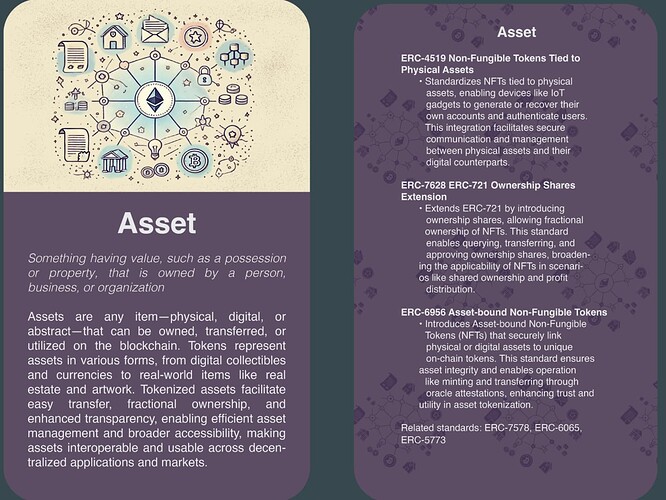I’d argue that standards or in this case the ERCs are not just an academic exercise but a way to reduce waste as we shouldn’t have to invent the wheel multiple times and to increase interoperability in the EVM ecosystem as through existing standard contracts we know what to expect from the contract implementation. These are not the only benefits of standardisation but maybe this is as clear as day as it is, just felt compelled to reiterate it.
But coming back to sullofs point about adoption, I think it is much needed but so far it seems like many of the ERC standards goes without greater adoption.
Now related to token design and particularily to NFT design I should probably define here first what I mean with NFT design, but you can imagine it as a more holistic process e.g. confirming iteratively in a structured and a systematic way that you are doing the right things and the things right when choosing a type of NFT for your project and for your ecosystem, than a purely mechanistic one such as implementing things from set of requirements.
I’ve also noticed that in academia or in academic peer-reviewed journal articles there seem to be very few papers that explore both token design and NFT related token standards beyond the typical ERC-721 and ERC-1155 standards.
So a thought occured to me that maybe we should have some kind of tooling to assist both devs and non-devs on quickly navigating and grasping that what kind of NFT related standards exists in the ERC archives besides reading through and understanding every possible NFT standard available.
So, I’ve gone through 163 NFT related standards, taken the standards that are at least at stage of being in review and formulated 19 different categories on basis of their function or purpose and formed sort of ‘design’ cards out of these. The plan is to release these under CC licence, likely on github so anyone can use them and contribute back to them.
On the front side there’s category title, description of the category and a short summary of what that type of NFTs mean in non-technical manner. On the back side of the cards I’ve raised a few ERC standards and briefly listed their key information related to the category.
Here’s a snapshot of a single category card
I’d love to hear what you think. Would something like this be helpful to you, or if not I’d also love to hear about it. Is there something missing from these cards? Or how could they serve your needs even better?
This is very much work-in-process but it has already garnered some academic interest as a potential design tool to assist non-devs on grasping NFT standards. There are also some plans to incorporate these as part of design exercises but I’ll let you know more about that once that track progresses.
